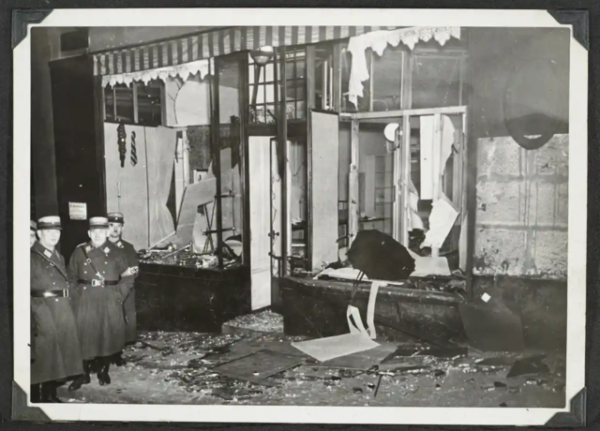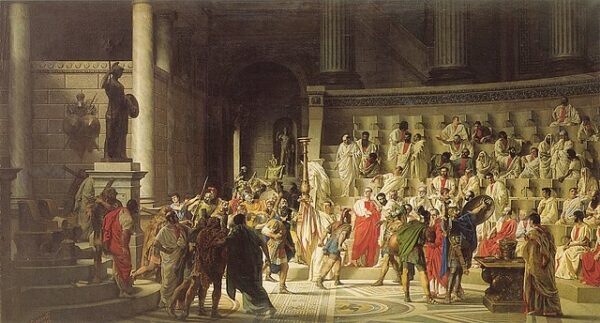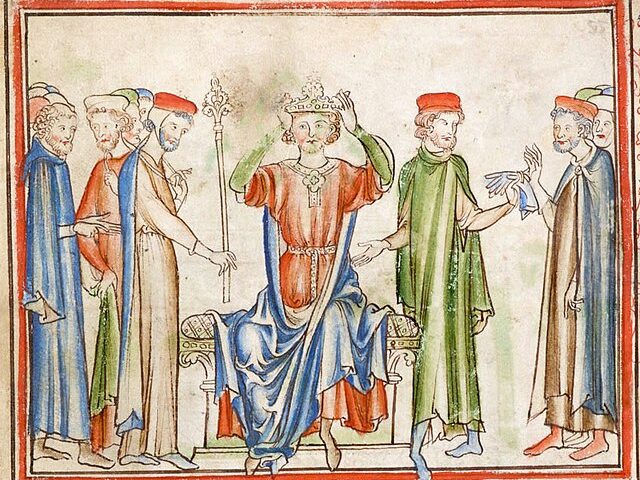Kristallnacht, also known as the Night of Broken Glass, unfolded on the night of November 9 and 10, 1938, marking a horrifying turning point in the persecution of Jews during the Nazi era in Germany. Triggered by the assassination of German diplomat Ernst vom Rath by a young Polish Jew named Herschel Grynszpan, the Nazis exploited this event as a pretext to unleash a violent pogrom against Jewish communities.
On the morning of November 9, a wave of anti-Jewish violence erupted across Germany and Austria. Synagogues were vandalized, set on fire, and destroyed. Thousands of Jewish businesses and homes were ransacked, looted, and damaged. The streets were littered with shards of glass from broken windows, hence the name “Kristallnacht” or the Night of Broken Glass.
The violence extended beyond property destruction, as countless Jews were physically assaulted, and many lost their lives. Jewish men were arrested and sent to concentration camps, foreshadowing the more systematic and organized horrors that would later characterize the Holocaust.
Kristallnacht marked a drastic escalation in the persecution of Jews, revealing the true extent of the Nazis’ anti-Semitic agenda. The event was met with international condemnation, but it also highlighted the world’s collective failure to intervene effectively against the rising tide of Nazi brutality.
On November 15, 1938, for example, President Franklin Roosevelt responded to Kristallnacht by reading “a statement to the media in which he harshly denounced the rising tide of anti-Semitism and violence in Germany. He also recalled Hugh Wilson, his ambassador to Germany.
Despite Roosevelt’s condemnation of the Nazi violence, the United States refused to ease the immigration restrictions it then had in place, constraints that prevented masses of German Jews from seeking safety in America. One reason was anxiety over the possibility that Nazi infiltrators would be encouraged to legally settle in America.
A more obscured reason was the anti-Semitic views held by various officials in the U.S. State Department. One such administrator was Breckinridge Long, who was responsible for carrying out policies relating to immigration, writes The History Channel.
Long took an obstructionist role in granting visas to European Jews, and maintained this policy even when America entered World War II after the 1941 Japanese attack on Pearl Harbor, Hawaii.
The aftermath of Kristallnacht set the stage for further atrocities against the Jewish population, ultimately leading to the systematic genocide of six million Jews during the Holocaust.
Kristallnacht emerged as an ominous prologue to the unfathomable atrocities that would engulf the world during World War II. It served as a haunting reminder of the perilous consequences when hatred is allowed to fester unchecked, and discrimination transforms into widespread violence and inhumanity. The shards of broken glass from that fateful night not only littered the streets but also shattered the facade of humanity’s collective conscience. Kristallnacht was not merely a historical event; it was a chilling precursor.






